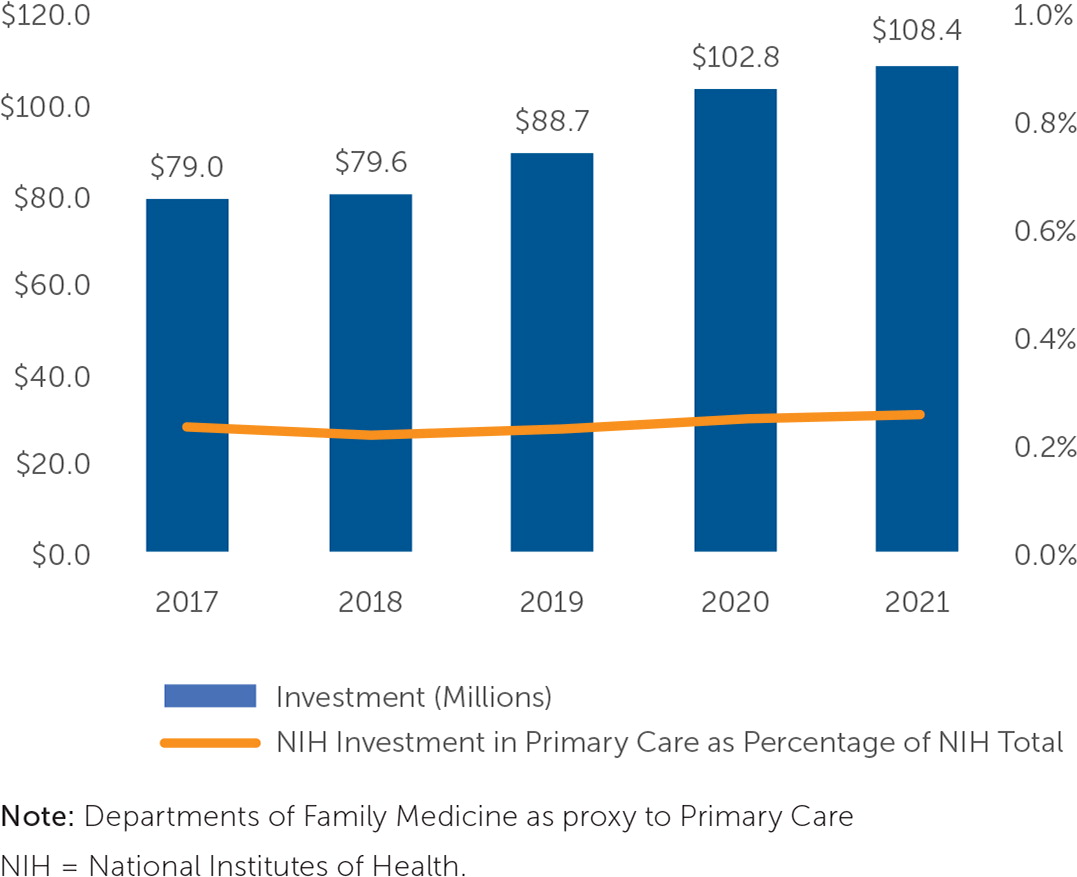
Am Fam Physician. 2023;108(6):online
Author disclosure: No relevant financial relationships.
Research in family medicine produces clinical information and improves care delivery, but it has yet to receive equitable federal investment. The National Institutes of Health (NIH) is the primary funder of medical research in the United States. In 2021, the NIH received $45 billion.1 Between 2017 and 2021, the NIH spent only 0.2% of its budget on family medicine research (Figure 1). Although other funding organizations exist, the NIH is the largest funder of biomedical research, and because it continues to undervalue family medicine research, its underinvestment impacts clinical care.

Primary care research activities are essential to implementing high-quality primary care, innovating new care approaches, adapting and disseminating population health and primary care systems, and measuring health outcomes.2 In their 2021 report, the National Academies of Science, Engineering, and Medicine charged the federal government to place more emphasis on and invest more dollars into primary care research.3
Of the $45 billion budget given to the NIH, 84% was spent on extramural research, and approximately 10% supported internal investigations and projects.1 Overall, $42.3 billion was spent on disease-specific research. Compared with the NIH budget, the annual budget of the Agency for Healthcare Research and Quality (AHRQ) is $488 million. In 2022, the AHRQ received an increase in direct primary care research funding of only $10 million.4 Of the total AHRQ budget, health services research was allocated only $128 million, and the Patient-Centered Outcomes Research Trust Fund received $109 million.
In 2023, the Robert Graham Center evaluated research funding disparities.5 Funding for family medicine research was determined based on methods from a previous study and included only grants allocated to family medicine departments.6 Data were collected over a five-year interval. Pediatric and internal medicine departments receive federal funding as well; however, this funding does not correlate directly with general primary care research because it is often distributed to subspecialties and inpatient care.
Between 2017 and 2021, the funding stream to primary care was just above 0.2% of the total funding from the NIH. This was essentially unchanged from the last time these data were collected more than a decade ago.6 The total spending in dollars from the NIH peaked at $108.4 million.5 When funding from the AHRQ was added, primary care received approximately $357 million in 2021.4
For comparison, Congress passed a bill in 2022 that provided $200 million in research funding for amyotrophic lateral sclerosis alone.7 Complementary and integrative health (including grants that address the topic through any NIH institute) received $577 million in 2022.8 Although these topics are important, family medicine is foundational to disease prevention, managing complications of chronic disease, and implementation of evidence-based interventions to keep people living longer and healthier lives. Research is necessary in primary care to identify care models and delivery systems that actualize basic science knowledge generated by other researchers. Making primary care research funding a federal priority could potentially lead to a more proactive health care system that better supports disease prevention and improves community and population health.
